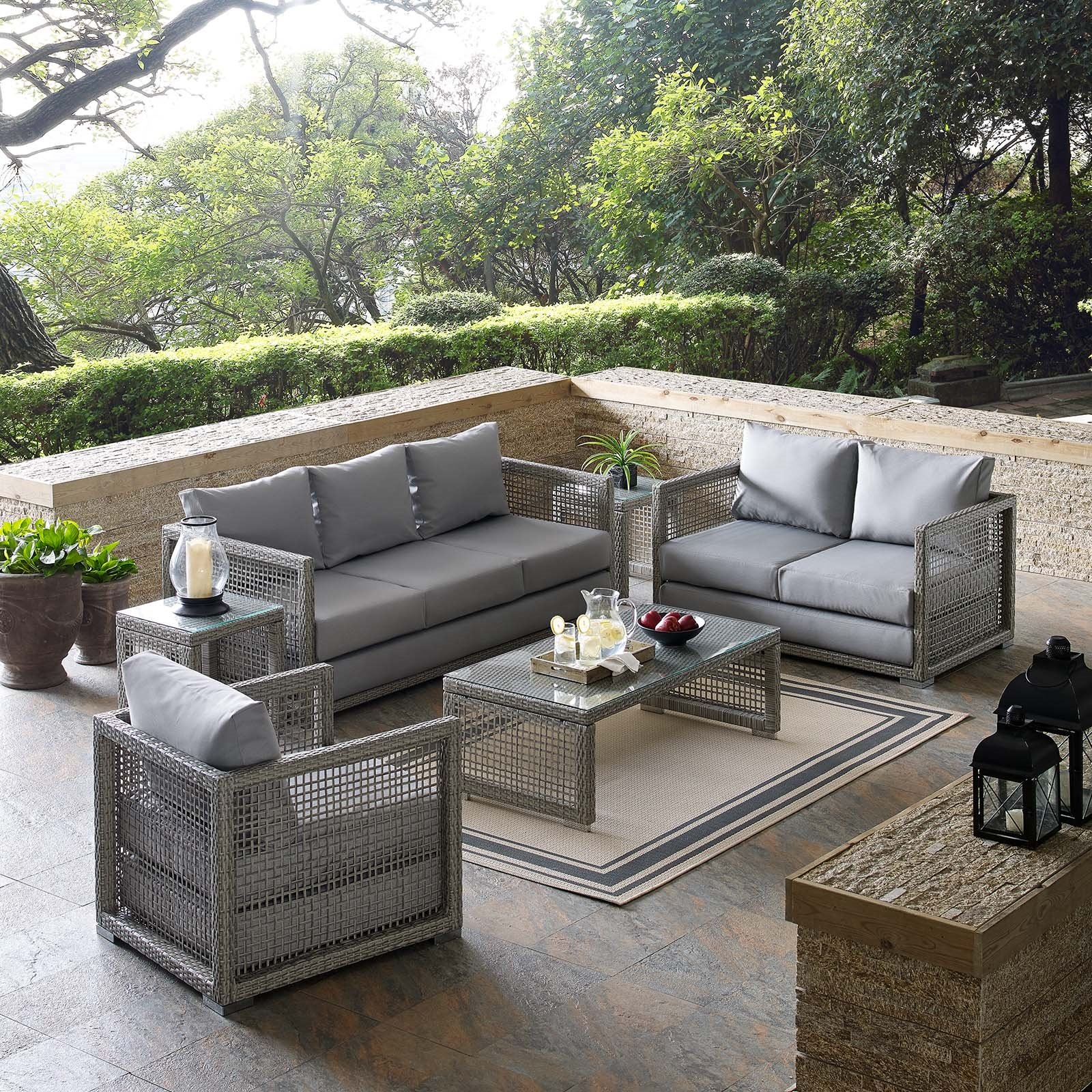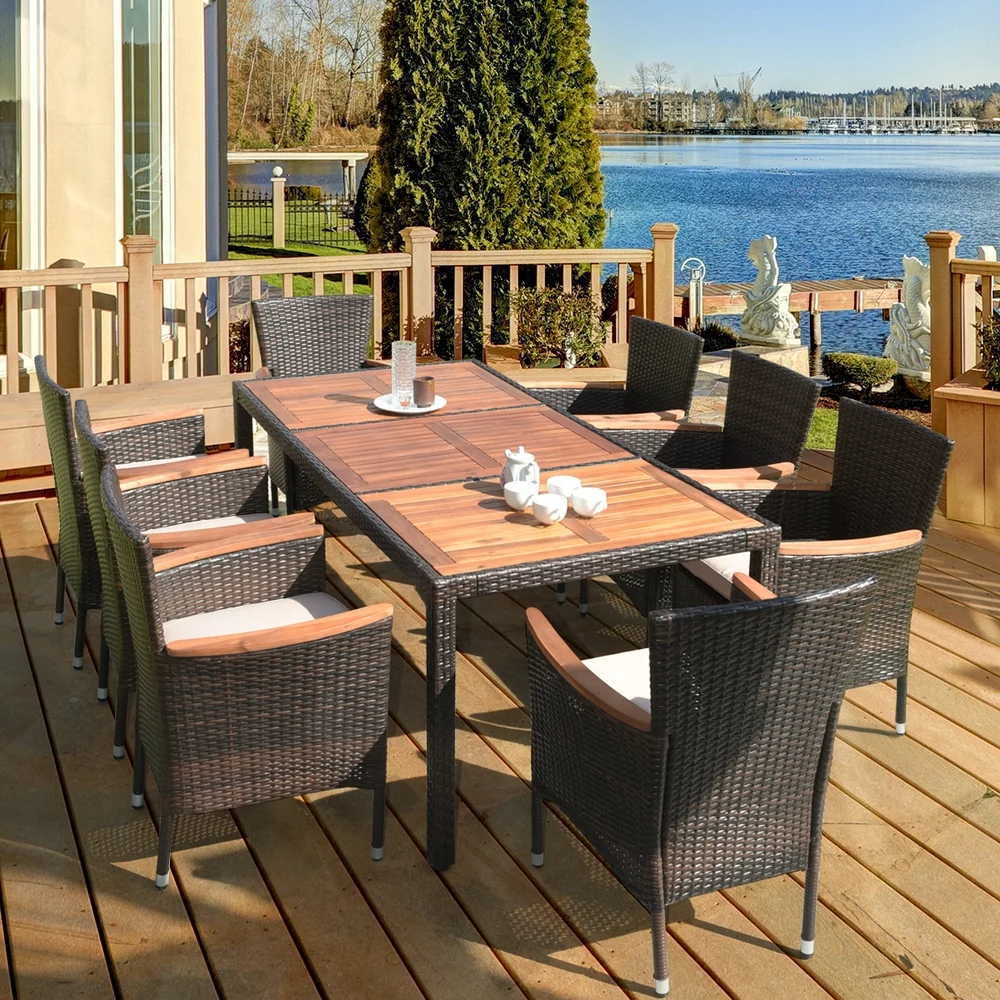Rattan furniture has become a popular choice for courtyards, terraces and gardens with its unique natural beauty and comfort. However, in outdoor environments, the service life of rattan furniture often becomes the focus of consumers.
So, how many years can rattan furniture be used outdoors? This article will comprehensively analyze from multiple angles such as material characteristics, environmental impact, and maintenance tips to reveal the mystery of the service life of rattan furniture for you.

Material characteristics of rattan furniture
Rattan furniture is mainly made of natural rattan or synthetic rattan. Natural rattan has the characteristics of lightness, toughness and good elasticity, and is ventilated and breathable, especially cool to use in summer. Synthetic rattan uses materials such as polyethylene (PE) to imitate the look and feel of natural rattan, while having stronger weather resistance and waterproofness.
1. Natural rattan:
Natural rattan comes from plants in tropical and subtropical areas, and its structure is strong and resilient. This material is specially treated when making furniture, such as drying, peeling and painting, to increase its durability. However, the weakness of natural rattan is that it is sensitive to humidity and ultraviolet rays. Long-term exposure to sunlight will cause fading and brittleness, and it is prone to mold and rot in humid environments.
2. Synthetic rattan:
Synthetic rattan is a product of modern technology. It is made of polymer materials, which not only retains the look and feel of rattan, but also improves its weather resistance. This material is not easily affected by ultraviolet rays and humidity, has a longer service life and lower maintenance requirements. Therefore, synthetic rattan furniture has gradually become the mainstream choice for outdoor use.

What environments affect the service life of rattan furniture?
The service life of rattan furniture in outdoor environments is affected by many factors, including climatic conditions, sunlight, rainfall, and air humidity. The effects of different environmental conditions on rattan furniture are as follows:
1. Sunlight:
Ultraviolet rays are one of the main causes of rattan furniture aging. After long-term exposure to strong sunlight, natural rattan will gradually lose its elasticity, become fragile and brittle, while synthetic rattan is relatively more sun-resistant, but may still fade after long-term exposure.
2. Humidity and rainfall:
High humidity is very bad for natural rattan, which can easily cause mold, rot and deformation. Although synthetic rattan is more waterproof, long-term water accumulation will also affect its structure and appearance. Therefore, waterproof covers and proper protection are particularly important when using rattan furniture in rainy areas.
3. Temperature changes:
Extreme temperature changes can cause damage to rattan furniture. In cold winter, natural rattan may become brittle due to sudden drops in temperature; while in hot summer, strong sunlight will accelerate its aging. Synthetic rattan performs better in this regard, but the impact of temperature on its flexibility and color cannot be ignored.

How many years can rattan furniture be used outdoors?
Based on the above environmental factors and material characteristics, the service life of rattan furniture under different conditions can be roughly estimated:
1. Natural rattan furniture:
Under ideal outdoor conditions (such as mild climate, moderate sunlight and humidity control), the service life of natural rattan furniture is about 3-5 years. However, in extreme climates or lack of maintenance, its life may be shortened to 1-2 years.
2. Synthetic rattan furniture:
Synthetic rattan furniture has a longer service life in outdoor environments, generally 5-10 years or even longer. If high-quality materials are used and proper maintenance is performed, the service life can be further extended. Synthetic rattan furniture is widely favored because of its excellent resistance to UV rays, humidity and temperature changes.
Maintenance tips to extend service life
Whether it is natural rattan or synthetic rattan, proper care and maintenance are the key to extending its service life. Here are some practical maintenance tips:
1. Avoid long-term exposure to the sun:
Try to place rattan furniture in a cool place or use a sunscreen to reduce direct damage from UV rays. When using sunscreen or other protective coatings, choose products suitable for rattan materials to avoid chemical damage.
2. Waterproofing:
In rainy seasons or humid environments, use a waterproof cover or move the furniture to a dry area. Regularly check and clean the accumulated water on the furniture to prevent mold and rot caused by long-term moisture.
3. Regular cleaning:
Use a mild detergent and a soft brush to clean rattan furniture regularly to remove dust and dirt. For natural rattan, you can use light salt water to wipe it to prevent mold growth.
4. Inspection and repair:
Regularly check the structure and surface of the furniture, and repair any loose or damaged parts in time. For natural rattan, proper reinforcement and painting can be carried out to extend its service life.
5. Seasonal storage:
In cold or extreme weather, it is recommended to move rattan furniture indoors for storage or use a special outdoor furniture cover for protection. This not only prevents weather damage to the furniture, but also extends its overall service life.
Conclusion
Rattan furniture has become an important part of the outdoor furniture market due to its unique beauty and comfort. However, its service life in outdoor environments depends on a variety of factors, including materials, environmental conditions, and maintenance methods.
Natural rattan furniture can be used for 3-5 years with proper maintenance, while synthetic rattan furniture can be used for 5-10 years, or even longer.

